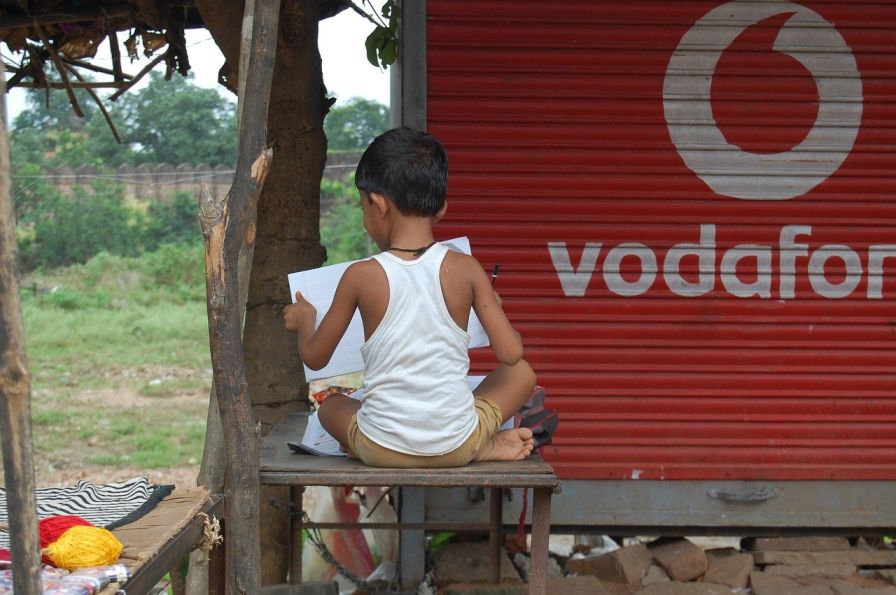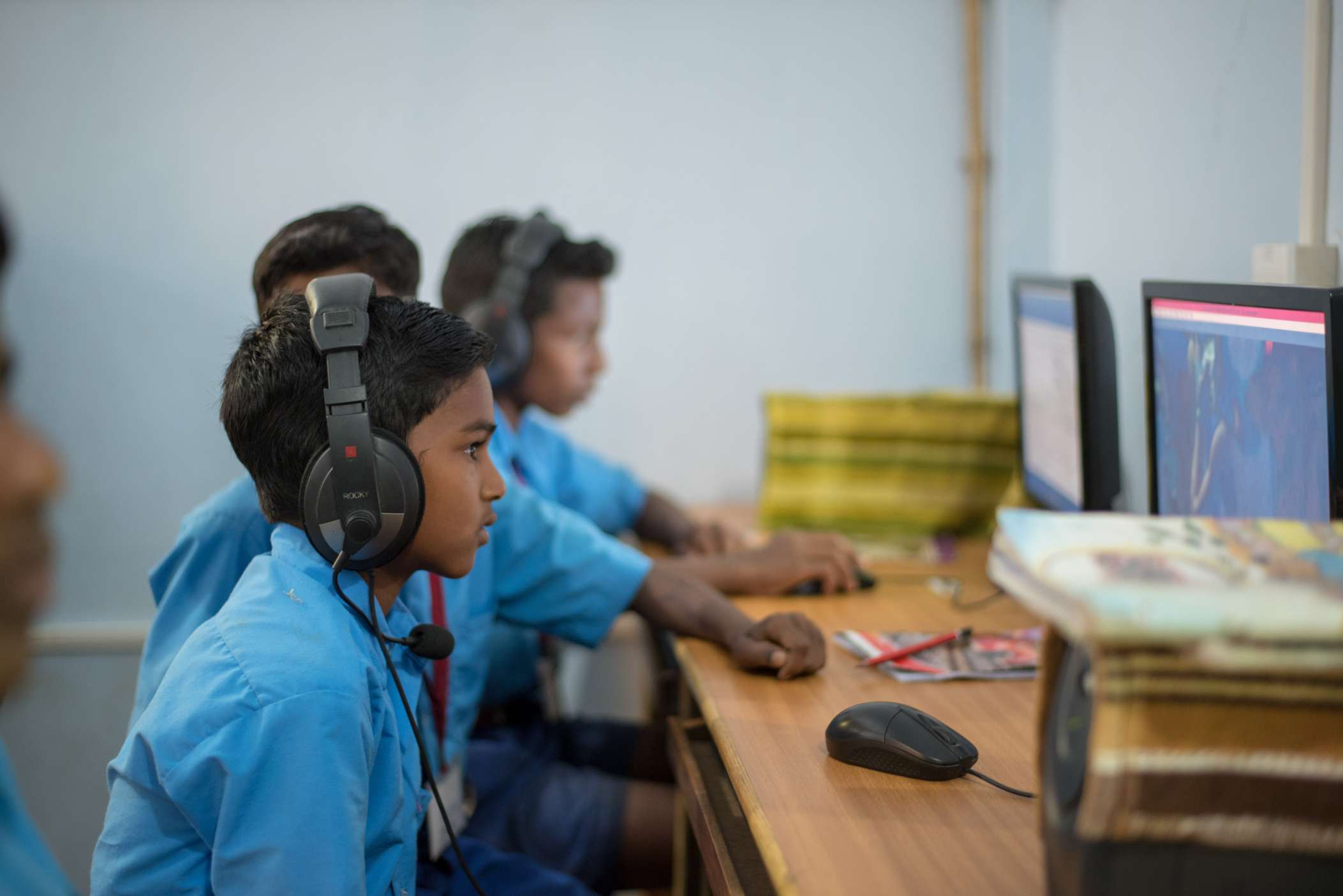In a matter of weeks, the COVID-19 pandemic has changed how students are educated around the world. With close to 1.3 billion learners being impacted as a result of national school and university closures, a large number of institutions have come up with a range of digital solutions to ensure that teaching and learning continue to take place. In India, one can see a similar trend unfolding, with much of it being concentrated in private schools that cater to urban, upper-middle class, English-speaking households.
While many of these technological solutions are likely to bring about innovations in education, they also have the potential to widen educational inequality.
This is not to say that the government has not come up with online solutions of its own. Since schools and colleges have been shut, several initiatives for online learning have been promoted by central and state governments, including DIKSHA and SWAYAM for students and teachers. SWAYAM has a repository of 1,900 courses available for students. The central government has also recently launched a national programme, VidyaDaan 2.0, to invite e-learning content contributions. Additionally, the Rajasthan State Education Department has launched SMILE—a digital platform to provide online courses and classes through various social media platforms in all the government schools of the state. Under this, more than 20,000 WhatsApp groups are being created to send study materials to the students and teachers. Similarly, the Delhi government has announced online classes for grades 10 and 12, and has committed to providing data packages for students.
In all of this, there has been much conversation and optimism around the transformative powers of online learning—how the crisis will transform education for the better and how it is the disruption the sector needed. While many of these technological solutions are likely to bring about innovations in education, they also have the potential to widen educational inequality, particularly among those who are already marginalised and those who lack access to the internet and other digital technologies.
Online learning in its current form is not enough
The idea of using EdTech to improve learning outcomes is not new, and it has been a part of India’s educational landscape for many years. Even though its use has been accelerated by the crisis, many of the challenges with digital learning, particularly in rural, low-income communities and government schools still remain, and have arguably only become more apparent during the crisis. Some of these include:
The first major challenge when it comes to the widespread adoption of remote learning is that digital access is not uniform across the country. Even though 66 percent of the country’s population lives in its villages, rural internet density is just 25.3 (there are just 25.3 internet subscribers for every 100 people). In comparison, urban India has a significantly higher density of 97.9. Additionally, households in rural India and even Tier-III and Tier-IV cities face the problem of irregular electricity supply, or do not have a smartphone or a television, among other things.
Even if one is able to improve access to technology, we still need children to be at a certain learning level to be able to follow instructions that are delivered online. While it may work for upper middle-class, urban children, because they are familiar with technology and are at a particular educational level to absorb the curriculum, this is not necessarily true for children from low-income households.

Even if one is able to improve access to technology, we still need children to be at a certain learning level to be able to follow instructions that are delivered online. | Picture courtesy: Pixabay
The second challenge is failing to see technology as only a medium. We need to recognise that it cannot replace the teacher in the learning process. Teachers need to be trained and empowered to engage with various online learning platforms. In the government schools where we work, a number of teachers do possess smartphones, but often use them only for Facebook and WhatsApp. In our library training courses, we have observed that many find it difficult to think and type their responses and engage fully through an online platform.
Moreover, there is limited empathy for students even in a classroom setting, with teachers categorising some students as ‘dull’ and ‘unable to learn’, and losing patience with the others. Technology will only reinforce this indifference and lack of engagement since they might deliver instructions without worrying about whether the students have grasped it.
Generally (and even more so in the case of a pandemic), the onus is on the parent to access online content and make it available for the child. Additionally, online content often needs parents to step in and support the children. From our experience of working in village schools, parents are often landless farmers and daily-wage labourers, with low literacy levels. Even parents who have completed basic education are often unable to support their children in school work physically, let alone engage with virtual content.
Research shows that very few EdTech products are designed for low-income students, particularly in vernacular languages. A majority of primary school-going children learn in their mother tongue or state language, and the lack of online content in multiple regional and minority languages hampers their access. Therefore, we need to create locally developed and locally relevant content, especially for children who speak minority languages, live in remote locations, and belong to marginalised groups.
Funders need to think beyond the present pandemic
In order to work towards solving these challenges, building solutions, and leveraging the crisis as an opportunity to transform the sector, we need to start thinking afresh. However, there is one major piece of the puzzle that is missing—funding.
Who is going to fund this change in strategy for education nonprofits? Simply introducing technology is not enough.
Who is going to fund this change in strategy for education nonprofits? Simply introducing technology is not enough. Funding is required for work to take place at multiple levels, starting with the cost of the technology itself, but moving beyond this to include developing content, training nonprofit staff to work with EdTech, and building the capacity of parents, students, and teachers.
Currently, a lot of institutional funding is being directed towards responding to COVID-19, and this is coming at the cost of existing programmes, particularly in education. In times of crisis, it is often children’s education that stops, with the assumption that once the crisis has passed, we will be able to pick up where we left off. But that is not true. At times of crisis and war, where children have suffered, it has been books and stories that have helped children through these difficult times. Play, storytelling, reading, discussion, and art are all forms of collaboration that help children negotiate change in their daily lives. These skills are hard to inculcate from the confines of our homes and in isolation from our peers, teachers, and real-life conditions. Right now, education needs funders who have that vision, who are thinking ahead, in the long-term and asking, ‘What beyond this emergency? What beyond this crisis?’
Views expressed are personal and do not reflect those of the organisation.
—
Know more
- Understand how education systems are facing a triple funding shock in light of COVID-19.
- Read this interview with Rukmini Banerjee on the way ahead for schools.
- Browse the National Digital Library of India, an online library created by the Ministry of Human Resource Development, which provides academic content by subject area for different levels of education.





